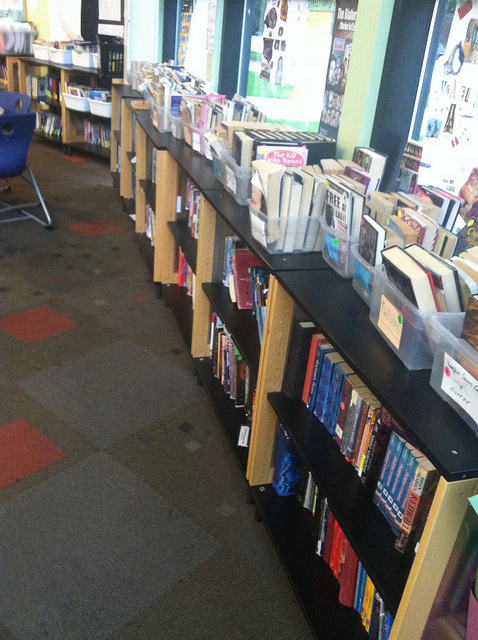
Middle School is Tough
[flickr id=”10499864986″ thumbnail=”medium” overlay=”false” size=”medium” group=”” align=”none”]
Finding your true interests, the growing pains, the hormones, creating an identity for yourself, rigorous academics, puberty…these are all aspects of student life during young adolescent years. Middle school can be tough. As young adolescents attend middle school, there are a plethora of challenges they face. And, as future educators, we have to be prepared to teach them!
[flickr id=”10499841735″ thumbnail=”medium_640″ overlay=”false” size=”medium_640″ group=”” align=”none”]
Currently, my cohort is taking two courses in the education department as part of our Masters of Art in Teaching program at Columbia that will prepare us to teach students at such a vulnerable and pivotal point in their lives: Psychology of the Middle School Student, and Methods of Teaching Middle School/Content Area Literacy. Within these two courses we are learning about all of the changes young adolescents face, all of their needs, theories of development behind these changes and needs, and strategies and methods to meet these needs through our teaching, regardless of our academic content area.
As a way to discuss all things middle school and to introduce readers to my cohort, I’d like to share with you some of my cohort and their experiences and ideas about middle school, and how they meet the needs of young adolescents through their teaching.
[flickr id=”10601377794″ thumbnail=”medium_640″ overlay=”false” size=”medium_640″ group=”” align=”none”]Meet Ashley, she loves cats and cooking. She will be student teaching in a fourth grade classroom, but will be endorsed to teach middle school math, science and social sciences. She has a lot of practice teaching middle school students, as she is a teacher and the assistant director for Scientists for Tomorrow, a Columbia College Chicago grant-funded after-school science education program for middle school students. Her biggest challenge while she was in middle school was that she had to make a decision at a young age as to which mathematics course to take, which in turn affected her ability to take higher-level mathematics and science courses throughout middle school and at the high school level. In our middle school coursework, we have learned that this kind of effect, also often termed as “tracking,” is detrimental to students if they cannot move to other courses or tracks once they have been selected for a specific track. This debilitates their opportunity to enhance their learning if desired. Ashley suggests always challenging yourself academically.
[flickr id=”10601632563″ thumbnail=”medium_640″ overlay=”false” size=”medium_640″ group=”” align=”none”]
Here’s Eliza, she currently works for Chicago Public Schools and also teaches for Scientists for Tomorrow. She believes that out of all the changes middle school students go through, physical and developmental changes to the body are the most challenging for students. The biggest challenge for educators, she mentions, “is probably just meeting the needs of the adolescent. All teens encounter some academic, physical, social, or emotional issues and figuring out what the issue is and how best to address it can be difficult.” Eliza mentions that it is valuable for educators to reflect on their own experiences as middle schoolers. “So often as educators we really want students to meet learning goals and standards, that is easy to forget or discount the importance of influences on teens, and academics become secondary for many of them,” she says. In our current coursework, we have been learning about the emotional, social, and physical changes that adolescents undergo, and this has helped Eliza understand teens better as well.
This is Nichelle! She enjoys educating both young children and young adolescents, but says that middle school students are among her favorite grades to teach. Nichelle says that she enjoys all the changes that students are experiencing. Although one might believe it’s the most stressful situation for teachers, Nichelle believes it may be the time where a teacher can be most influential to students. While Nichelle was in middle school she started a peer listening group for the girls who were having trouble coping with the physical changes. She was able to implement this group with the help of a teacher. “Without that help,” she notes, “I may have lost a friend.” Although young adolescents are at an age where they are very influenced by their peers, as Nichelle has shared, adults and educators play a very important role in influencing, teaching, and supporting students at this stage. “This is the time where students need the educational support as well as the emotional support,” she says. “By becoming an engaging integral teacher you can have the ability to inspire a young generation and help them find who they want to be in society, in their communities and in their homes.”
Although middle school can be tough for students and it comes with its challenges for educators, teaching middle school students can be one of the most rewarding and fun paths an educator can choose to take. This is the point in young adolescents’ lives where they need positive, responsible role models, a solid understanding of choices that lie ahead of them in their academic careers, and support in their academic, social, and personal lives.

